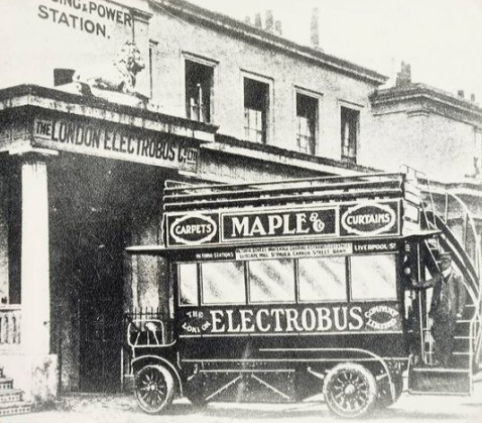
London Electrobus in April 1906
The London Electrobus Company was a bus company that operated a fleet of electric buses in London. The electric bus was the first practical battery-electric bus and a precursor to the electric buses that experienced a surge in popularity in the 21st century.

Registered for the first time in April 1906, the company began operating electric buses between London’s Victoria Station and Liverpool Street on July 15, 1907. The clean and quiet electric buses were popular with the traveling public. The company introduced a number of innovations and was the first double-decker bus operator to experiment with a roof on the upper deck. At the height of its success in late 1908, the company had approximately 20 buses in operation and began operating a second bus route from Victoria to Kilburn.
However, the London Electrobus Company was plagued by financial difficulties during its short existence. On January 3, 1910, the electric bus service was discontinued and the company was liquidated under allegations of fraud. Eight of the electric buses were sold to the Brighton, Hove and Preston United companies. The rest of the London electric buses were dissolved for spare parts. The Brighton bus company was acquired by Thomas Tilling in 1916, and the last electric bus in Brighton ran in April 1917. According to Tilling, a shortage of spare parts had led to the cessation of electric bus operations.


Average Rating